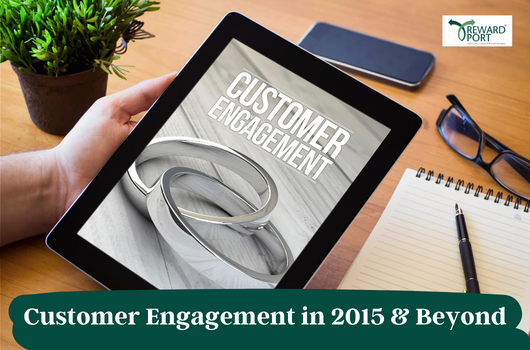A customer is not an interruption to our work, but the purpose of it. There may be a controversy about who quoted this, but the inherent truth in the statement can never be contested. Companies spend millions of dollars every year to attract customers, yet they manage to retain very few. Technology can help to bridge the communication gap between customers and brands, yet it threatens to make them lose the human touch. To quote an example from our everyday lives- how many of us have the patience to wait on the IVR until our call is connected to a human customer service representative?
Here’s what every business needs to do in order to engage customers in 2015 and retain them for years to come:
1. Know your customers and know him well
When Wally Urtz, a store manager at the Food Emporium in Hastings-on-Hudson, a New York City suburb was transferred to a nearby suburb, the entire village of around 8000 people rallied around him. A manager may seem to be an unlikely person to set off such an emotional outburst, but he represents ‘a dying breed that is being replaced by something that people are resentful to and very unhappy about because the human element is missing’, quotes an article about him in the New York Times (October 26, 2003). Incorporating the human touch in our business isn’t difficult. Simple steps like calling clients, sending them letters/emails, or meeting them in person can go a long way in knowing customers and making them feel special.
2. Personalize the experience by using technology to automate communication in a scalable way:
Technology can be used to automate communication. This can be tackled by creating interactive documents and integrating elements such as drop down menus, data feeds, etc.
3. Emotionally engage…its beyond offers and discounts now:
Companies are obsessively fighting the price war, yet customers are more fickle than ever. Only those that can move beyond the price tag zone and create real value for customers can survive. As earlier said, know your customers well. And use this information to surprise them and personalize their experience. A discount driven approach cannot sustain for long, but one driven by customer loyalty can. To be successful in customer engagement, make sure that you tweak your business model to rely on loyalty.
3. Engage across channels:
A typical modern day customer refers to not less than 6 to 7 communication channels before deciding on a product. Some of them include website content, in store, or social media. Businesses should ensure that information passed through each of these channels shouldn’t be conflicting or ambiguous. Technology can help in this regard by standardizing enterprise wide systems, thereby allowing companies to send out branded messages via emails, SMS’s etc.
4. Mobile engagement is most effective…get this right:
Smartphone searches are all set to replace desktop search. Companies are now busy exploiting this trend with location based messages and mobile ads, incorporating mobile SEO and adapting a responsive web design.
5. Reward them for actions…even the simplest one:
Don’t we all thrive on attention? Rewarding customers with small surprises can go a long way in creating brand loyalty and increasing customer retention.
6. Make customers feel like a VIP:
The easiest way to show that you value customers is by being polite. Words such as ‘thank you’ and ‘please’ often seem insignificant until someone stops using them. Get to know customers interests and wants by using technology such as Google Think Insights and include these habits by publicizing and praising them openly.
7. Use technology effectively…build or outsource, but do it:
Technology can be used to get your message across its intended audience. Webinars can be hosted on topical issues, using QR codes, Wi-Fi targeting and arranging virtual meetings are some of the things that businesses can do. If adapting to technology seems an overwhelming task or if you are starved of time, outsourcing is a good option.
8. Use the Internet of Things to engage:
Market researchers have predicted that by 2020, more than 212 billion devices are likely to be connected through IoT. To explain IoT in a nutshell, this is a technology that enables people to connect everyday physical objects to the internet, enabling them to communicate with other devices and even transfer data. With IoT, you’d never run out of grocery supplies because your fridge could be preprogrammed to monitor stock and send a message to the local grocer automatically.
9. Participatory engagement- involve customer in your next product development:
A new product development need not necessarily involve inventing something new. More often than not, it involves modifying an existing product by eliminating its limitations. Involving customers in this process not only results in better customer engagement, but also ensures that the end result is in line with customer expectations.
Customer engagement needs patience and creativity. Creating brand loyalty is the ultimate goal because this is directly linked to profitability. But without maintaining a fine balance, your efforts are likely to backfire, because you may end up overwhelming him. There may be different ways of engaging a customer, but at the end of the day the main aim of every strategy is to create happy consumers who can promote your products to one and all.


